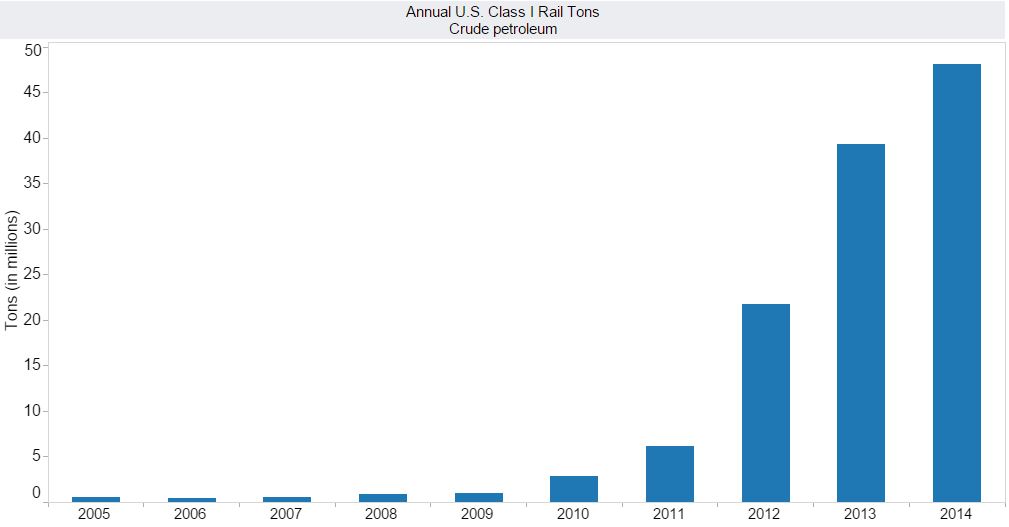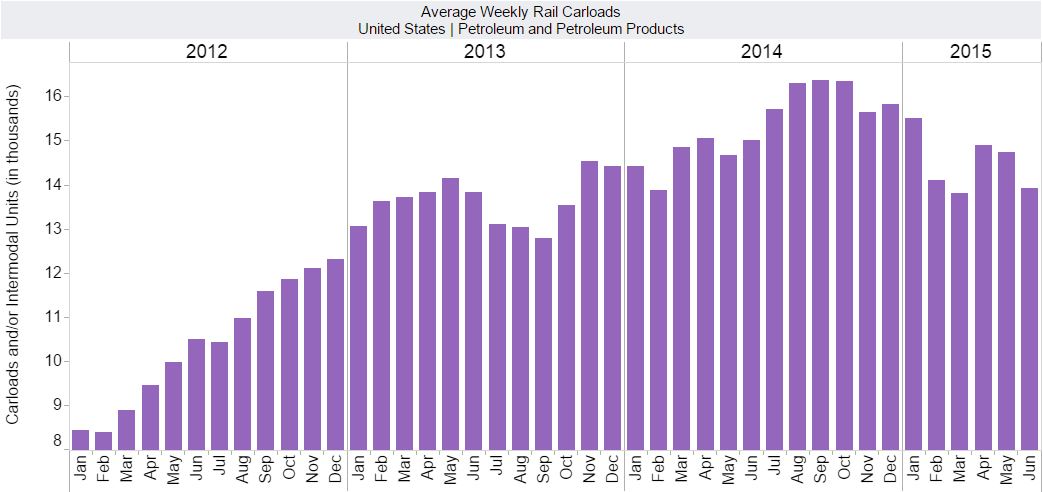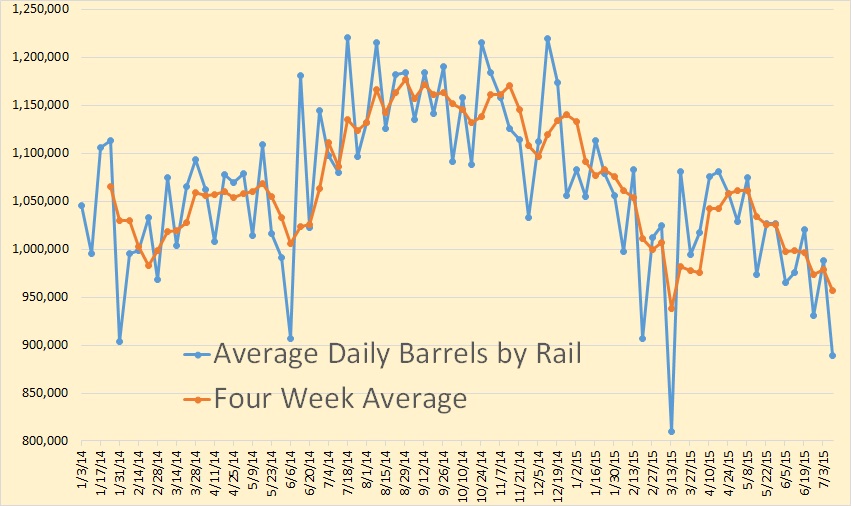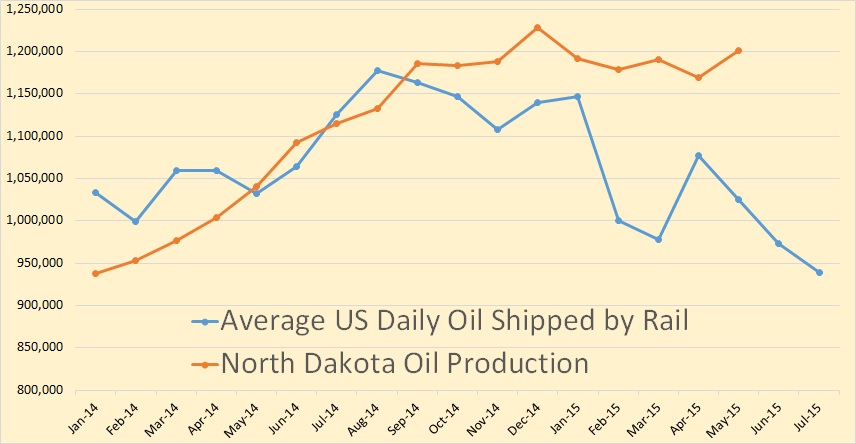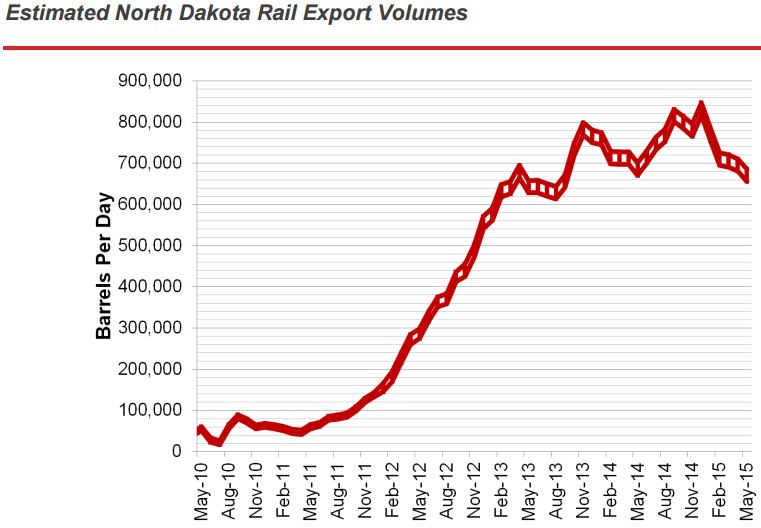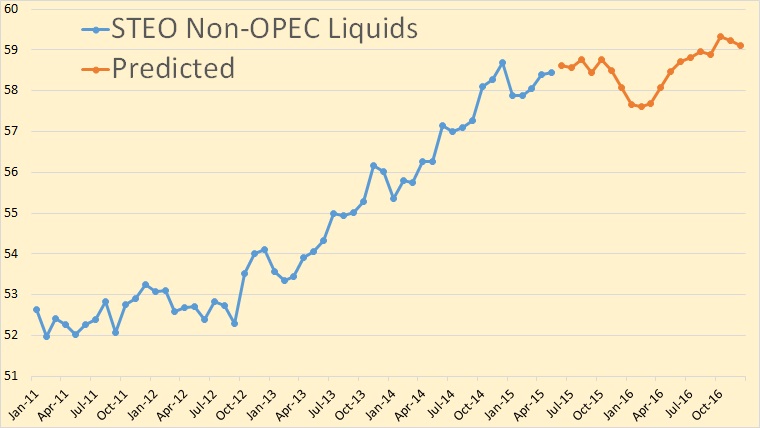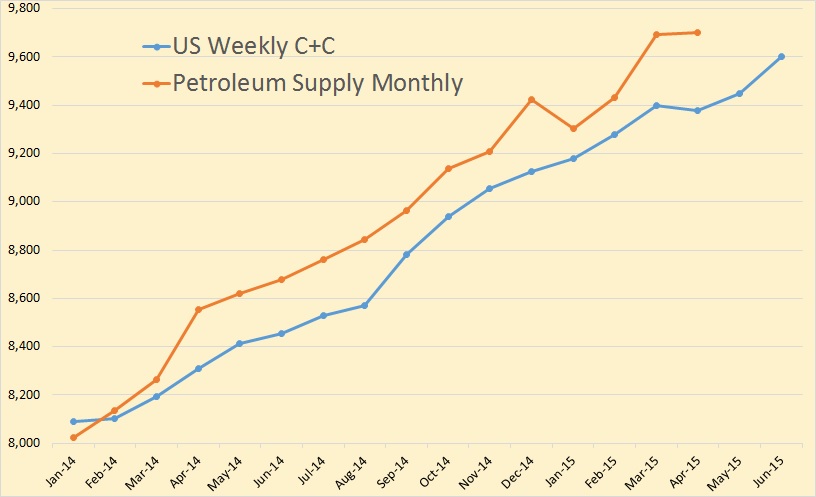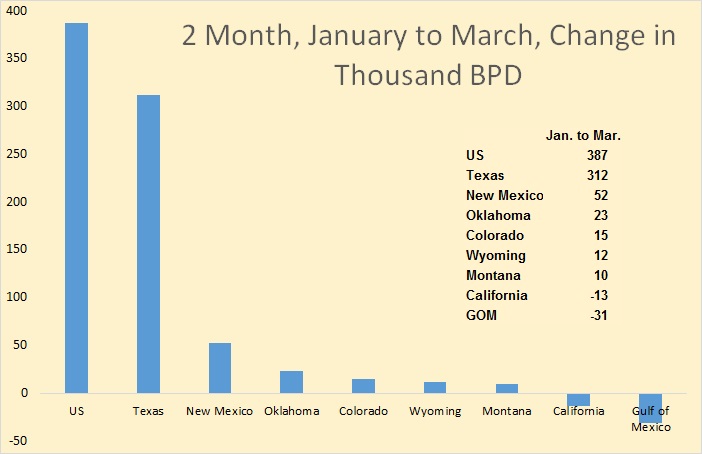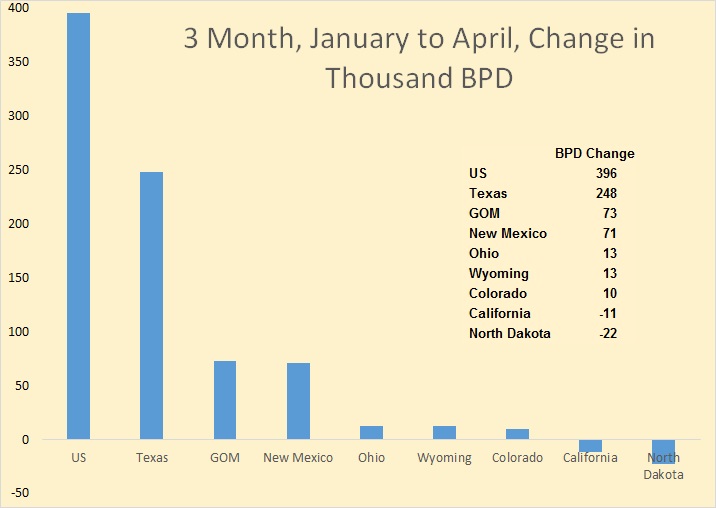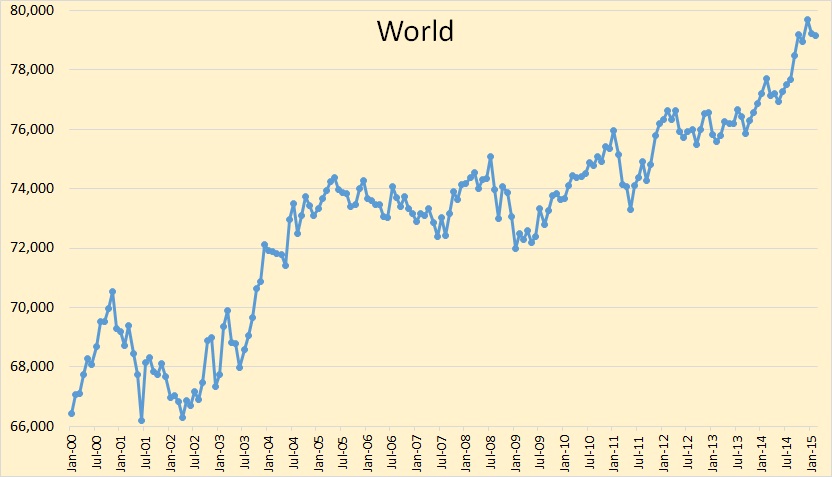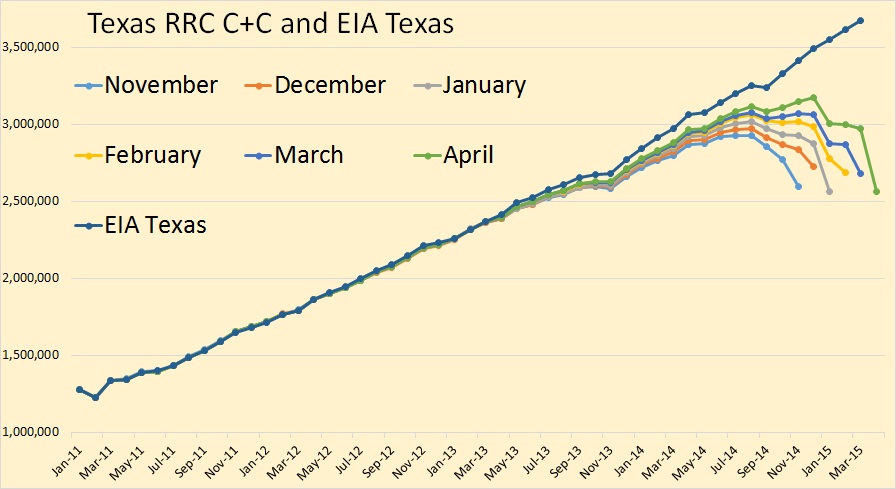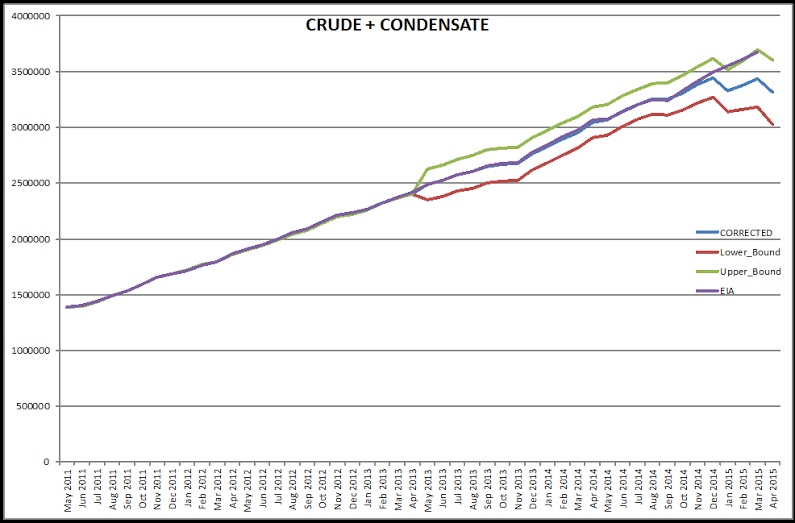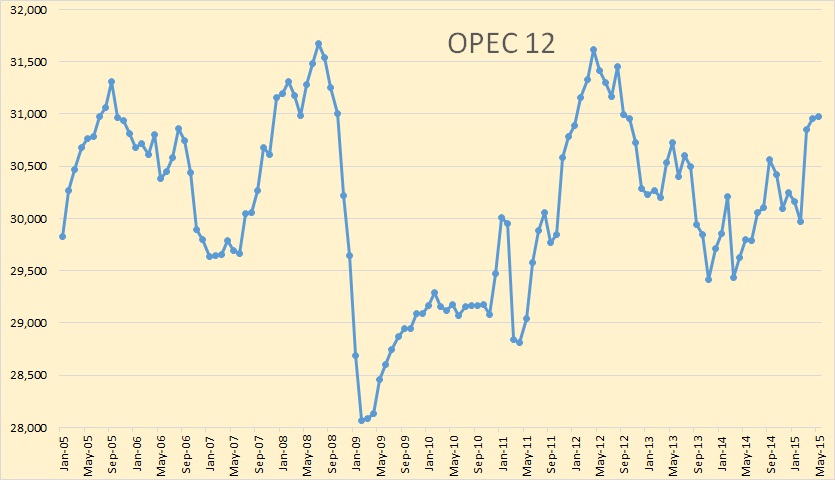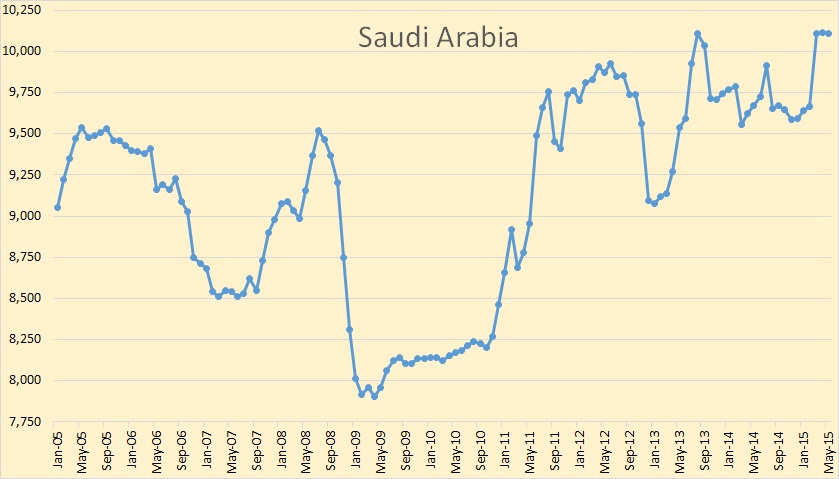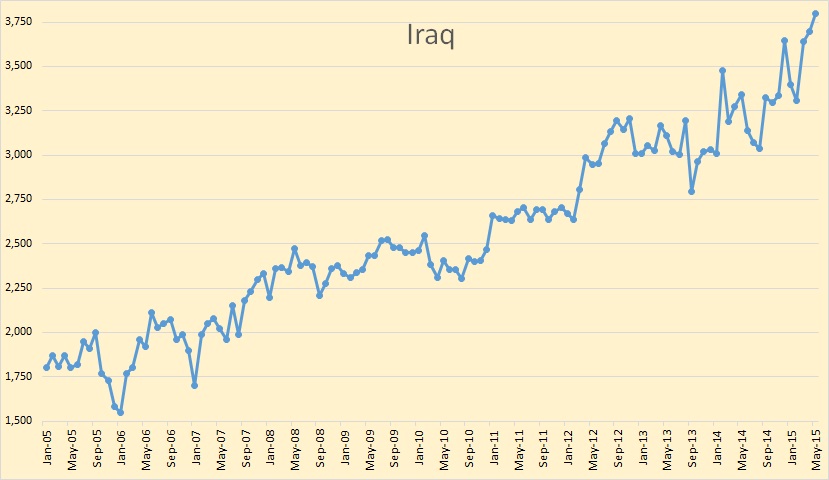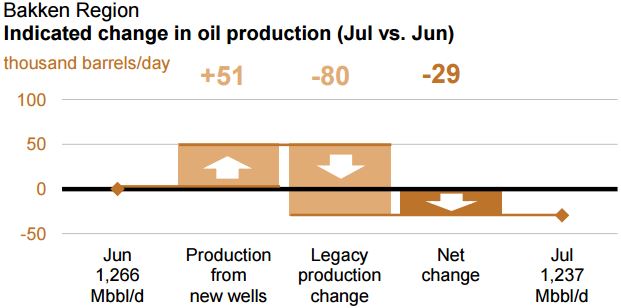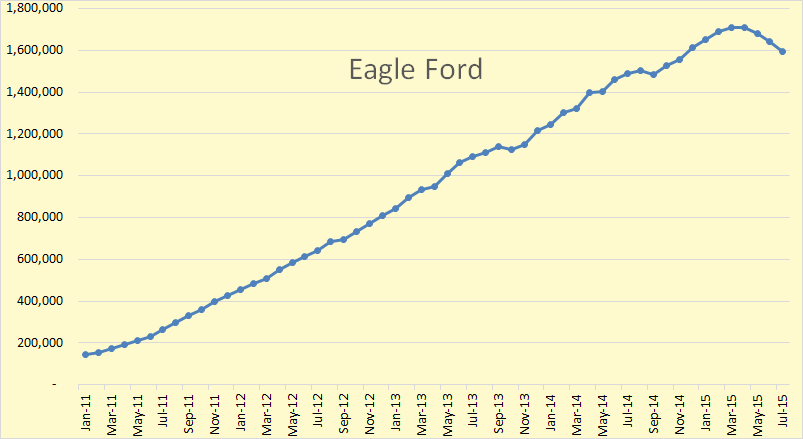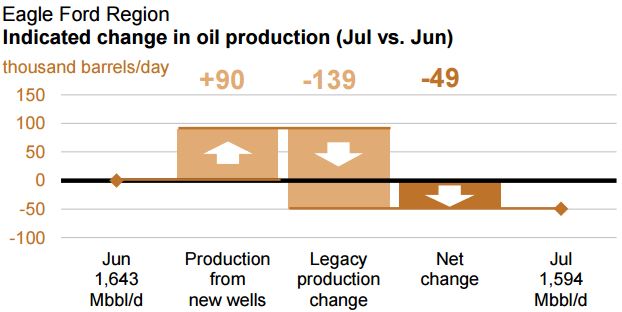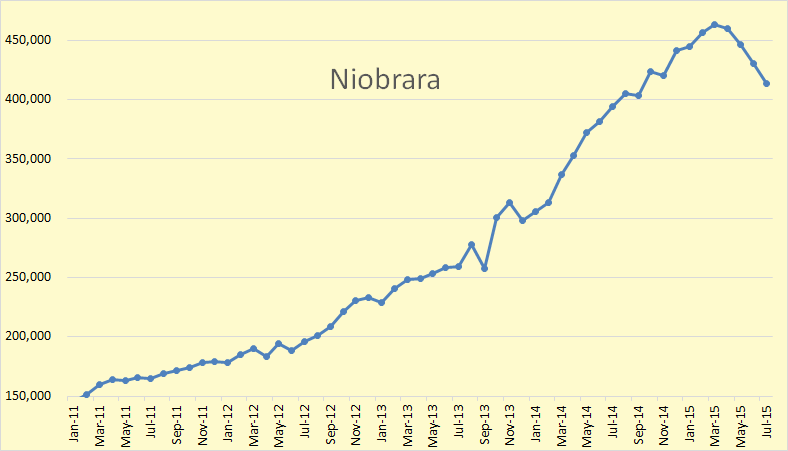Anyone who understood that U.S. drillers in shale plays had large inventories of drilled, but not yet completed wells, knew that production would probably rise for some time into 2015–even as the number of rigs operating plummeted. Shale drillers who are in debt–and most of the independents are heavily in debt–simply must get some revenue out of wells already drilled to maintain interest payments. Some oil production even at these low prices is better than none. Only large international oil companies–who don’t have huge debt loads related to their tight oil wells–have the luxury of waiting for higher prices before completing those wells.
The drop in overall U.S. oil production (defined as crude including lease condensate) is based on estimates made by the U.S. Energy Information Administration (EIA). Still months away are revised numbers based on more complete data. But, the EIA had already said that it expects U.S. production to decline in the second half of this year.
What this first sighting of a decline suggests is that glowing analyses of how much costs have come down for tight oil drillers and how much more efficient the drillers have become with their rigs are off the mark. It was inevitable that oil service companies would be forced to discount their services to tight oil drillers in the wake of the price and drilling bust or simply go without work. And, it makes sense that the most inefficient uses of drilling rigs would be halted.


